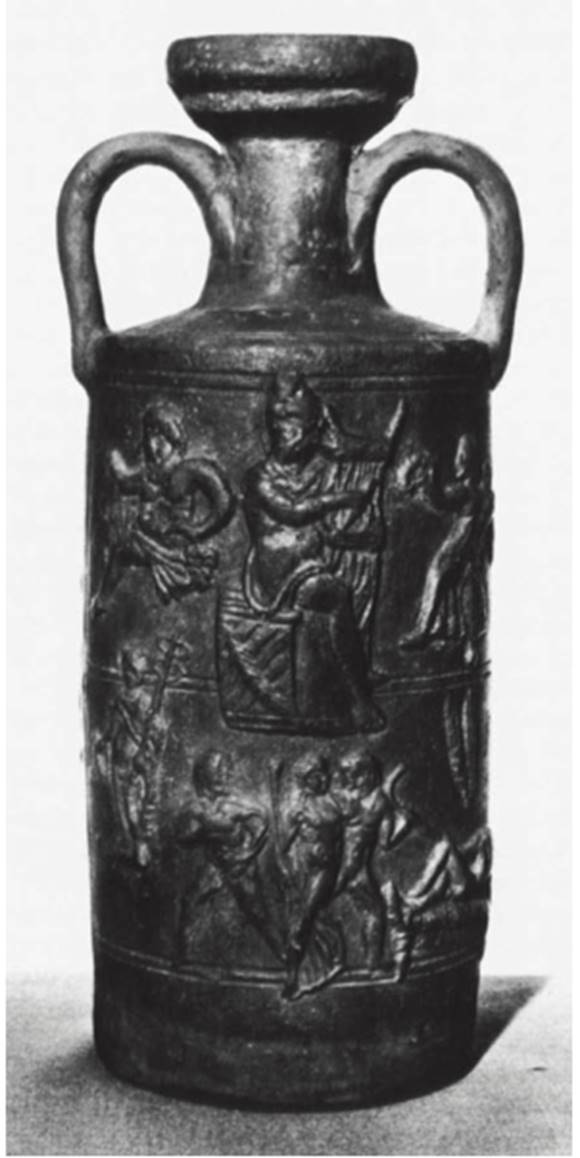Relief pitcher with Orpheus and Ares. North Africa, 3rd century. Red earthenware
A group of similar relief vessels has been attributed to the pottery workshop of Navigius, active in Tunisia about 270-320, and several duplicates of the Mainz pitcher are known (Salomonson, 1969, p. 87, no. 213, fig. 122). Unfortunately, the purpose of these vessels and the particular significance of Ares and Orpheus in the decoration of this pitcher are not precisely understood, although they are probably to be associated with grave deposits in expectation of personal redemption after death.
On one side, Orpheus, with his characteristic Phrygian cap, sits on a throne playing his lyre. A fat old Silen, holding a bunch of grapes, gestures at the left as Victory approaches from the right to crown Orpheus. In the lower panel Hermes appears, slightly separate from a maenad, two satyrs, and a pair of reclining lovers. The whole composition is loosely organized around the central figure of Orpheus.

According to Greek myth, Orpheus was the son of the Thracian king Oeagrus and the muse Calliope, thus dependent on Apollo. He was said to be a great lyric poet and magical musician whose songs could charm the beasts and calm the forces of nature. He descended to the underworld to restore his dead wife, Eurydice, to life without success, although he returned safely. Orpheus became the center of a Thracian cult that was often closely associated with Dionysiac ritual, though the reasons for this relationship are not clear. Orpheus' role as a psychopomp in the Eurydice myth may account for the presence of Hermes, the prime bearer of souls to the underworld in pagan mythology; the lovers may symbolize the happiness of the future life. The crowning of Orpheus by Victory indicates his eventual triumph as a pure spirit, a force of creative inspiration.
The nude, helmeted figure of Ares stands proudly on the other side, similarly crowned by Victory. Around him prance several Dionysiac celebrants, holding thyrsi; the identity of the reclining figure beside him is uncertain (Endy- mion ?), as further to the right a diminutive Aphrodite appears. Her presence is also invoked by the Erotes who hold a garlanded crown beneath Ares' feet, suggesting his capture by love. Because Ares has been quieted by the sweet music of love and Orpheus reduces strife as he subdues the animals, the cultic and mythological association of Ares and Orpheus seems to express the hope for the ultimate victory of blissful peace in the hereafter.
Date added: 2025-08-31; views: 84;
